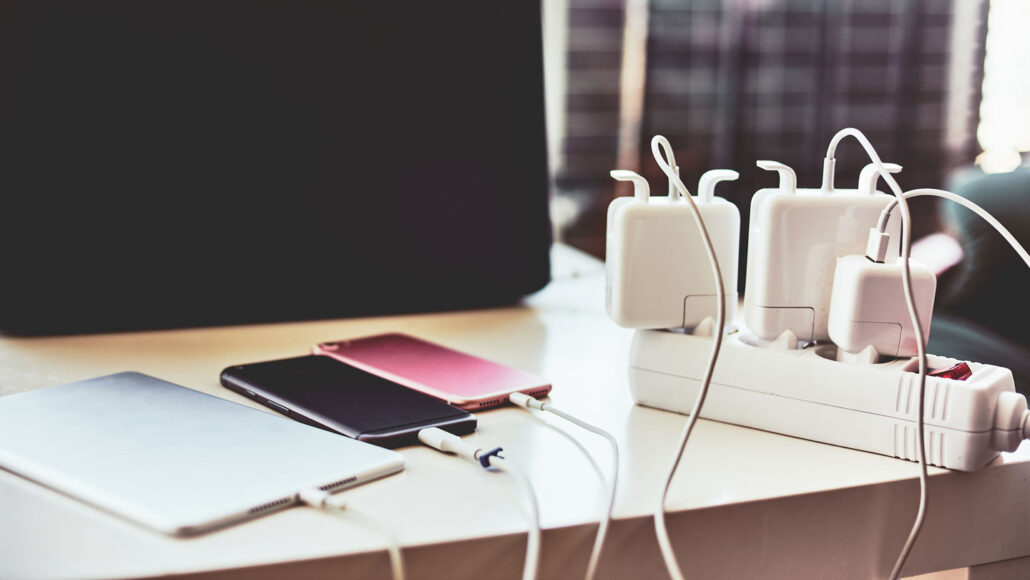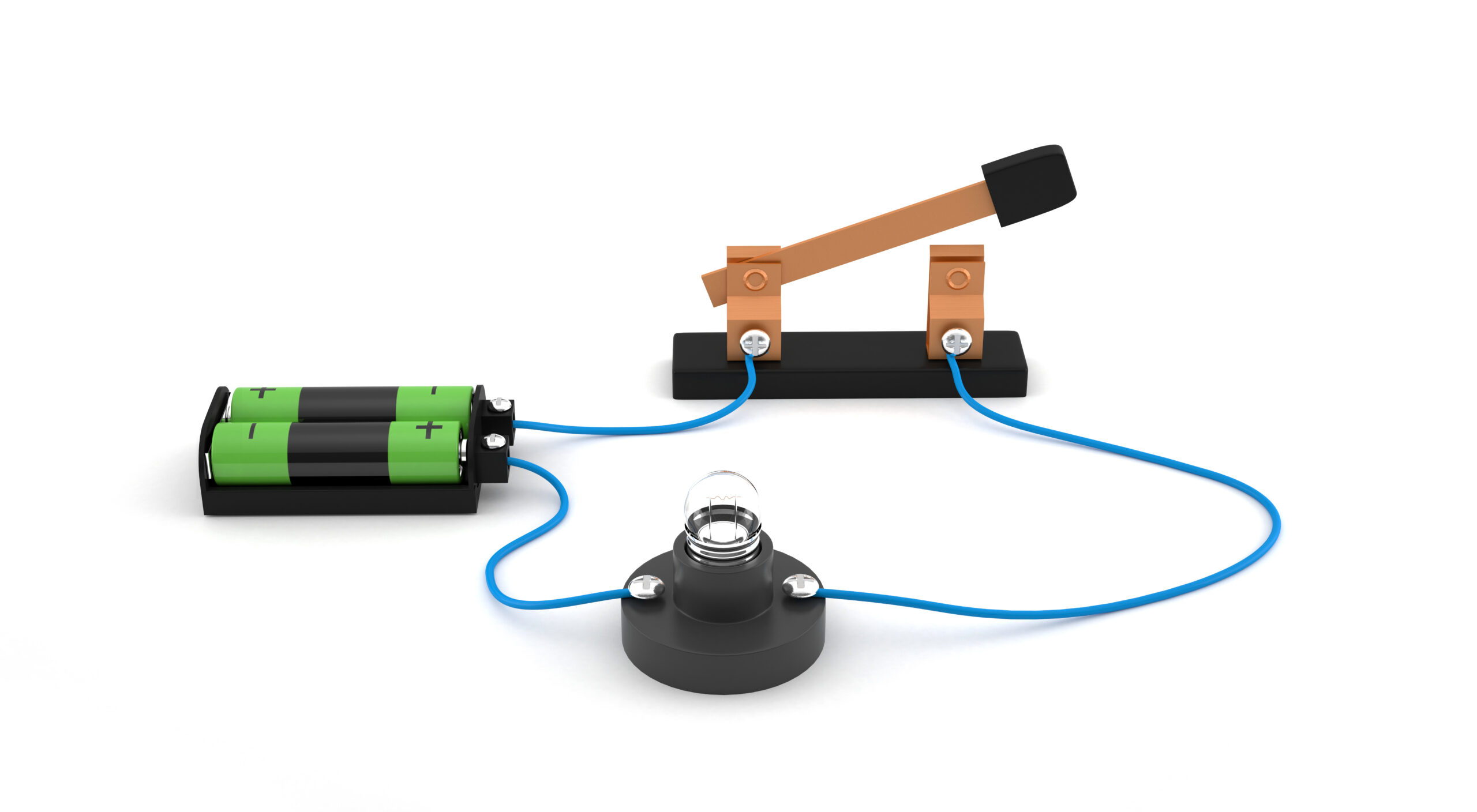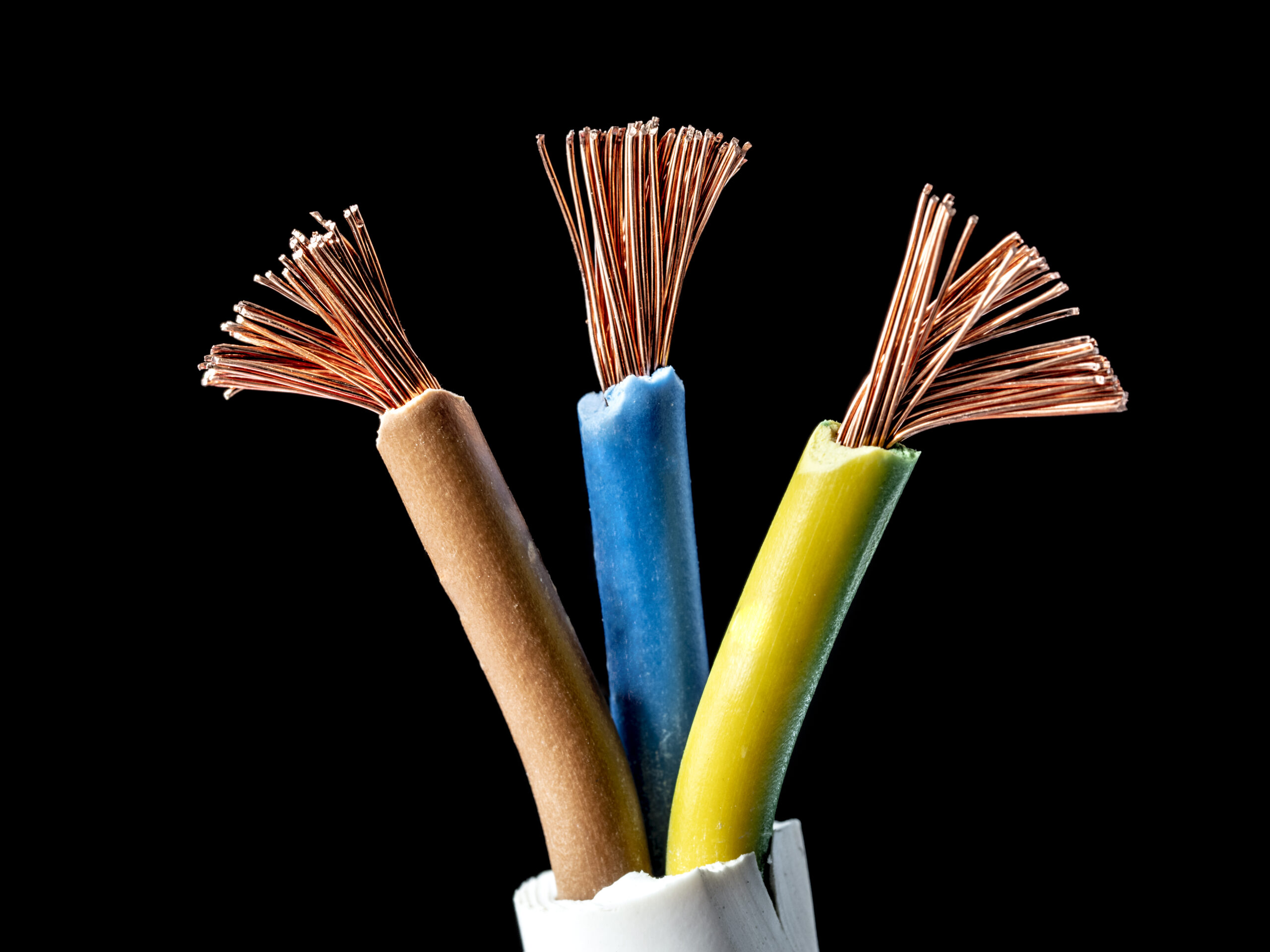Explainer: Understanding electricity
Take a look at what powers your devices

Do you know why each of these devices needs its own power cable? Read on to find out!
Bohdan Bobak/ EyeEm/Getty Images Plus
By Trisha Muro
Low power. Your device will power down unless plugged into a power outlet.
How many of us have gotten such a warning from one of our digital devices? Looks like it’s time to plug it in and recharge the batteries with electricity.
But what is electricity?
Electricity is the term we use to describe the energy of charged particles. Electricity might be stored, like in a battery. When you connect a battery to a light bulb, electricity flows. This happens because electrical charges (electrons) are free to carry energy from the battery through the bulb. Sometimes electricity is described as the flow of electrons between neighboring atoms.
Several terms help us describe electricity and its potential to do work.
Current refers to the flow of electric charges. That is, how much charge is moving per second. When people talk about electricity, they’re usually referring to electric current.
Currents are measured in units known as amperes, or amps, for short. A single ampere of current is about 6 quintillion electrons per second. (That’s the number 6 followed by 18 zeroes.) For many devices, it’s common to see currents that are only thousandths of an amp, or milliamps.

Educators and Parents, Sign Up for The Cheat Sheet
Weekly updates to help you use Science News Explores in the learning environment
Thank you for signing up!
There was a problem signing you up.
Voltage offers a gauge of how much electrical energy is available to power devices. Voltage could be stored in a battery or capacitor. You may have seen a 1.5-volt label on AA and AAA batteries. In the United States, every regular electrical outlet supplies 120 volts. Large appliances like refrigerators and some air conditioners are powered by a special outlet. That outlet supplies 220 volts.
Current and voltage are related. To understand how, imagine water flowing downhill in a river. Voltage is like the height of the hill. Current is like the moving water. A tall hill could cause more water to flow. In the same way, a bigger voltage can yield a bigger electrical current.
But the height of a hill isn’t the only thing that affects how the water flows. A wide riverbank would allow lots of water to flow. But if the river is narrow, the path is restricted. Not as much water can get through. And if the river gets clogged with fallen trees, the water might even stop flowing. Just like many factors affect the water’s ability to flow, there are several ways that the flow of electric current can be helped or resisted.
Resistance describes how easily current can flow. A bigger voltage can lead to a bigger current, but more resistance lowers that current. Resistance varies from material to material. It also depends on the condition of a material. For instance, dry skin has a high resistance. Electricity does not easily pass across it. Getting skin wet, however, drops the resistance to almost zero.
It’s important to realize that any amount of resistance may be overwhelmed by too much current trying to pass through it. As an example, electricity will not flow through wood if you simply hold the electrode of a small battery against the trunk of a tree. But a powerful bolt of lightning packs enough energy to split the tree in half.

Circuits describe the paths that electrical currents take. Think of a circuit as a loop. In order for electricity to flow, this loop must remain closed. That means it has no gaps. When you connect a light bulb to a battery, the electricity flows from one end of the battery, through a wire, to the light bulb. Then it flows back to the battery through another wire. The circuit will continue to light the bulb as long as the loop is closed. Cut the wire and there’s no longer a circuit because the path is broken.
Conductors and insulators are types of materials that respond differently to electricity. Conductors have very low resistance, so they can easily transmit a current. Most metals are very good conductors. So is saltwater. (This is why it’s dangerous to go swimming during a lightning storm! The chemicals in a swimming pool and the salts on our bodies make the water an especially good conductor of electricity.)
Insulators, in contrast, strongly resist the flow of electricity through them. Most plastics are insulators. That’s why electrical cords are jacketed in a layer of plastic. Electricity will flow through the copper (metal) wire inside a power cord, but the plastic coating outside makes the cord safe for us to handle.

Semiconductors are materials that are in between conductors and insulators. In semiconductors, the flow of electricity can be precisely controlled. That makes these materials useful for directing electrical current, like tiny traffic guards, inside electronics. Computer chips depend on the ability of semiconductors to interact in complex circuits. The most common semiconductor material is the element silicon. (Not to be confused with the silicone found in flexible ice cube trays and baking tools!)
Transformers, as their name suggests, are devices that transform electrical voltage. They can be found in the box-shaped plugs at the end of device chargers. Most of these transformers convert a wall outlet’s 120 volts into a much, much lower level. Why? Household outlets are primed to run high-power appliances such as lamps, toasters, vacuum cleaners or space heaters. But that voltage is far more than smartphones and computers can handle. So the transformer in a charge cord steps down the electricity to a safe level that can run your device without frying it. Each device has its own specific needs for how much voltage it can handle. That’s why it’s important to use the right charging cable for each electronic device.
Electricity can safely power our homes and our devices when used properly. Keep in mind, however, that even common household electricity can cause severe injury or death. Always tell an adult about any broken plugs or cracked electrical wires. Don’t overload circuits by plugging in too many devices at once. Never use electricity near water. And make sure that a device’s power is turned off when changing its batteries. Finally, follow all of the safety warnings that come with electrical devices. It’s better to be safe than to risk injury or fire.







